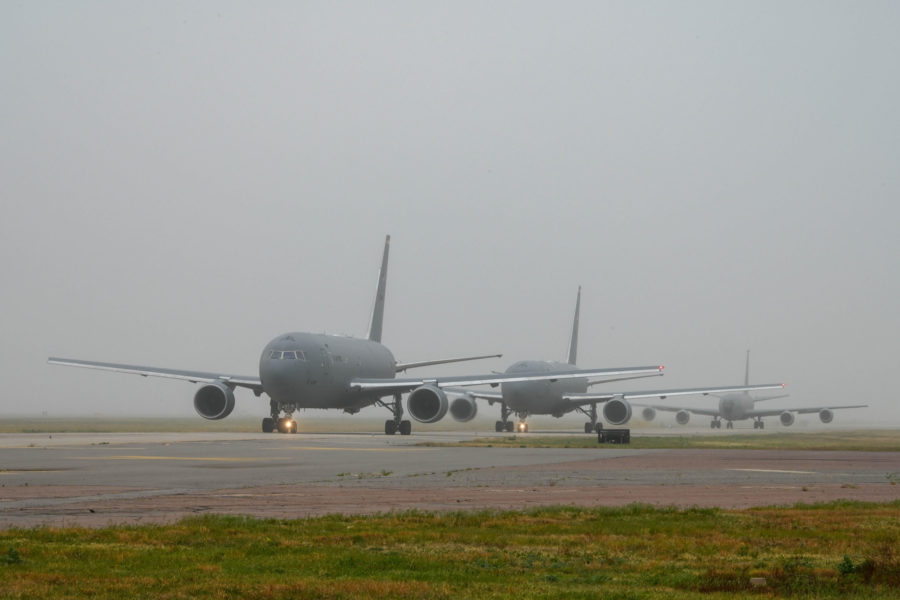Altus Air Force Base, Okla, the pilot schoolhouse for large transport aircraft, evacuated a large number of its C-17s, KC-46s, and KC-135s to other bases in the region on April 15, ahead of severe weather expected overnight.
The 97th Air Mobility Wing moved many of its mobility aircraft to undisclosed locations “based on availability and capability” of those bases to receive and temporarily accommodate them, the wing said in response to queries from Air & Space Forces Magazine. The receiving bases were not named, citing operational security. Altus is about 100 miles west-southwest of Oklahoma City’s Tinker Air Force Base, one of the Air Force’s largest depot complexes.
“All available hangar space will be used to accommodate as many aircraft as possible, with the remainder being evacuated,” an Altus spokesperson said.
Schoolhouse operations were expected to continue, however, with student training to be performed “off station,” the spokesperson said.
The expected weather prompting the evacuations comprised “55-knot winds, 1.25-inch hail, and a slight risk of tornadic activity during the evening hours,” the Wing said. But the aircraft were expected to return within a day.
In addition to “severely damaging winds” and hail, the National Weather Service said conditions are ripe for “severe fire danger” as well.
The evacuations follow a new precedent set in 2018 when Hurricane Michael virtually leveled Tyndall Air Force Base, Fla., resulting in a multi-year reconstruction effort still underway six years later. Tyndall’s commander at the time ordered aircraft to evacuate ahead of the rapidly escalating Category 5 hurricane, likely saving scores of aircraft worth billions of dollars. Those aircraft not moveable because they were down for maintenance were locked in hangars, and sustained heavy damage when hangar roofs were torn off by the storm.
In the wake of that storm—among a series of base disasters of varying severity since the late 2000s—commanders have been instructed to err on the side of safety if there is a warning of grave weather conditions.
In 1952, two-thirds of the Air Force’s nuclear B-36 fleet was destroyed or incapacitated by a string of tornados that ripped through Carswell Air Force Base, Texas, and nearby states. In the wake of the storms—which threw bombers onto one another and flipped some onto their backs—it took more than three months to repair the aircraft and restore Strategic Air Command’s strategic deterrence bomber fleet’s readiness.

